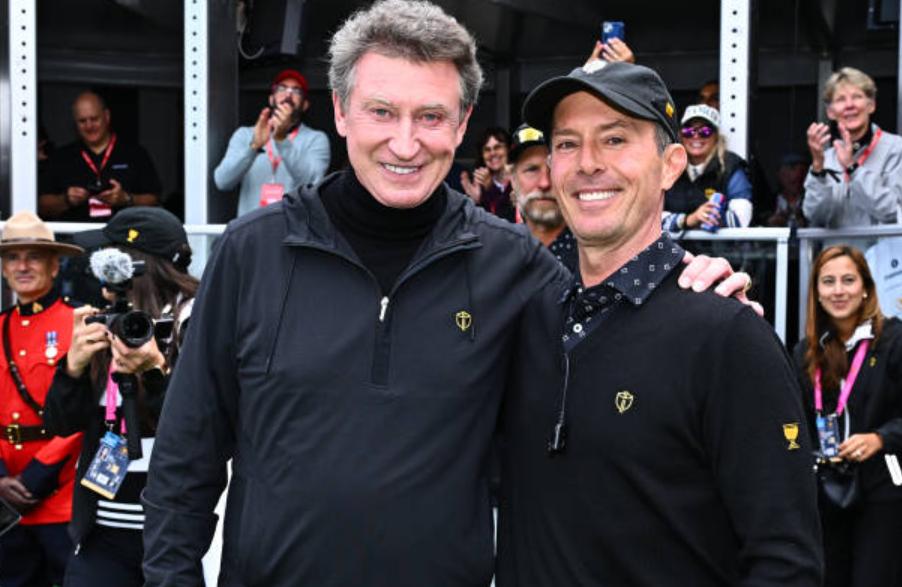Understanding the Gretzky Rule
The Gretzky Rule was introduced in the National Hockey League (NHL) in 2005, taking its name from the iconic player, Wayne Gretzky. Its main goal was to improve the dynamics of the game and increase scoring opportunities by limiting how much defensive players could interfere with offensive players. This piece explores the specifics of the Gretzky Rule, examines its effects on the sport of hockey, and discusses the enduring influence of Wayne Gretzky in the sport.
Profile of Wayne Gretzky
Wayne Gretzky, known as “The Great One,” is celebrated as one of the most exemplary hockey players ever. Born in 1961 in Brantford, Ontario, his outstanding abilities and record-setting performances have cemented his status in hockey history. From 1979 to 1999, he competed in the NHL and established multiple records, including the highest number of career goals and points. Beyond his impressive stats, Gretzky’s influence on hockey goes beyond mere numbers; he is a symbol of excellence and a source of motivation for future athletes.
Overview of the Wayne Gretzky Rule
The Wayne Gretzky Rule, officially termed the “standard of enforcement for obstruction fouls,” was introduced by the NHL after the 2004-2005 lockout. This regulation aimed to enhance the game by increasing scoring opportunities and reducing the instances where defensive players hinder the movement of offensive players. Here are the main aspects of the rule:
- Strict Enforcement: Referees were directed to rigorously apply existing rules against interference, holding, and hooking, ensuring that defensive tactics did not obstruct offensive gameplay.
- Increase in Power Plays: The stringent application of these rules led to more power-play chances for teams, due to a higher number of penalties being issued for obstructive actions.
- Focus on Speed and Skill: The rule emphasized the importance of speed, skill, and creativity in the game, allowing offensive players more freedom to demonstrate their abilities effectively.
Impact of the Rule
The Wayne Gretzky Rule significantly influenced hockey at various levels. Its effects include:
- Higher Scoring: A major goal of the rule was to increase the number of goals scored in the NHL. This was achieved by giving players more room to maneuver, which in turn led to higher scoring games.
- Dynamic Gameplay: This rule change encouraged a more active and speedy style of play. Players could exploit their quickness and skills with less hindrance from defenders.
- Adaptation by Players: Both offensive and defensive players had to modify their strategies. Offensive players needed to make the most of the enhanced space, while defenders had to find new ways to be effective within the limits of strict foul enforcement.
- Increased Fan Engagement: The more energetic and high-scoring games generated greater excitement among fans, boosting their interest and involvement in the sport.
The Enduring Influence of Wayne Gretzky
Wayne Gretzky’s impact on hockey transcends his phenomenal playing career. The rule named after him, known as the Wayne Gretzky Rule, showcases his lasting effect on the sport and his vision for a more engaging and dynamic style of play. His legacy continues to motivate both players and fans, and this rule underscores his significant influence on hockey.

The Wayne Gretzky Rule is a crucial development in the history of the NHL and the sport itself. It promotes speed, skill, and offensive ingenuity, aiming to boost the sport’s entertainment value while celebrating the legacy of a hockey legend. Although the rule has seen adjustments and new interpretations over the years, its introduction was a key moment in ongoing efforts to improve and elevate the game.
The rule exemplifies a dedicated attempt to maintain the essence of hockey while adapting to the needs of a modern and evolving sport. As the NHL progresses, the lasting impact of Wayne Gretzky and the rule that bears his name will continue to be a vital part of hockey’s rich history.
Key NHL Rule Modifications
Here are five significant rule changes in the NHL:
- Offsetting Penalties: This adjustment means that when two players are penalized simultaneously, teams continue playing with five players each instead of reducing to four or three.
- Mandatory Helmets: By 1985, it became compulsory for new NHL players to wear helmets, enhancing player safety.
- Goalie Equipment: Discussions took place regarding the reduction of goalie equipment size to potentially increase scoring opportunities, though major changes were implemented gradually.
- Icing Rules: Modifications to icing rules were made to accelerate the pace of the game.
- Fighting Penalties: The league introduced stricter penalties for fighting, aiming to emphasize the skill aspects of the game by reducing physical altercations.
Read Also: Who is Brent Gretzky?
Conclusion
Wayne Gretzky’s significant impact on hockey is reflected through the Gretzky Rule, a change that revolutionized the sport by fostering quicker, more skill-focused gameplay. This rule not only improved how players perform but also how fans experience the game. Gretzky’s lasting legacy continues to influence and define hockey, demonstrating that his contributions extend well beyond his numerous records.
FAQ’s: Gretzky Rule
What is the Gretzky Principle?
The Gretzky Principle suggests focusing on where opportunities will arise, rather than where they currently exist. This idea is famously inspired by hockey player Wayne Gretzky, who emphasized skating to where the puck is going to be, not where it has been.
Why was Gretzky removed from the hockey Hall of Fame?
There is no truth to the rumors that Wayne Gretzky was removed from the Hockey Hall of Fame. Gretzky remains a celebrated figure in ice hockey due to his significant contributions and achievements in the sport.
What is Wayne Gretzky’s famous quote?
One of Wayne Gretzky’s most famous quotes is: “You miss 100% of the shots you don’t take.” This statement emphasizes the importance of taking opportunities and risks in order to achieve success.
What is the golden rule in hockey?
The golden rule in hockey, as outlined by John Russo, emphasizes teamwork and strategic positioning: Always support your teammate and ensure one defenseman is in front of the net to guard against the opposition when they have the puck in your zone or might gain possession.
What is Gretzky’s rule?
Gretzky’s rule, particularly in the Silver League, restricts a player to scoring no more than three goals per game. Should a player score a fourth goal, it will be disallowed, followed by a whistle and a face-off in the offensive zone.



